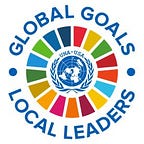Building Inclusive Cities: Sustainable Urban Development
Download the full policy memo here.
“Legislation can always be changed.
It’s very hard to tear down a bridge once it’s up.”
- Robert Moses
Cities are expected to host sixty percent of the world’s population by 2030. As migration patterns slightly gravitate towards urban living, it is important to consider the existing framework, especially in terms of physical infrastructure, for the cities that populations are flocking towards.
The United States experienced impressive urban growth starting in the mid-1800s, especially along the mid-Atlantic region. However, this era preceded any substantial movements towards civil rights and equality by nearly a century. Urban landscapes were not designed with equality in mind; even with the large expansion of urban communities in the 1920s -1940s, discrimination, like today, remained highly prevalent. The historical context in which cities were established should be assessed when considering the growth of cities in the future, especially as cities prioritize reinvigorating urban infrastructure.
The United Nations Sustainable Development Goal 11 (SDG 11), adopted in 2015, seeks to create cities that are more inclusive, safe, resilient and sustainable. The United States, despite its active role in shaping the SDGs, has fallen short in providing the policy development and program funding to invest in sustainable and equitable infrastructure across the country. This policy memo offers a historical overview of urban planning and development within the US and operationalizes SDG 11 as an organizing principle to identify areas of focus for policymakers and members of the community seeking to advance sustainable and equitable urban infrastructure.
The SDGs provide a holistic framework through which the repercussions of racism and classism can be addressed; in context, failing infrastructure can lead to the loss of life. Proper investment and assessment of how cities can move forward can improve public health (SDG 3), reduce inequalities (SDG 10), and mitigate the negative consequences of climate change (SDG 13). The United Nations works with its member states to understand the intersections of the Sustainable Development Goals and advance multi-faceted, cross-sectoral mechanisms for sustainable development. SDG 9 recognizes that access to quality and sustainable infrastructure impacts quality of life and economic opportunity. In an urban environment, infrastructure is integral to the landscape, making it difficult to assess infrastructure without also looking at urban planning; as such, this memo primarily focuses its discussion in the context of SDG 11: Sustainable Cities, particularly target 11.3: Enhance inclusive and sustainable urbanization and capacity for participatory, integrated and sustainable human settlement planning and management in all countries.
Cities serve as powerful hubs for the spread of culture and ideas; policymakers thus need to recognize and address the underlying inequities which have been embedded and perpetuated through federal, state, and local policy in order to transform the landscape of urban development.
Download the full policy memo here.
